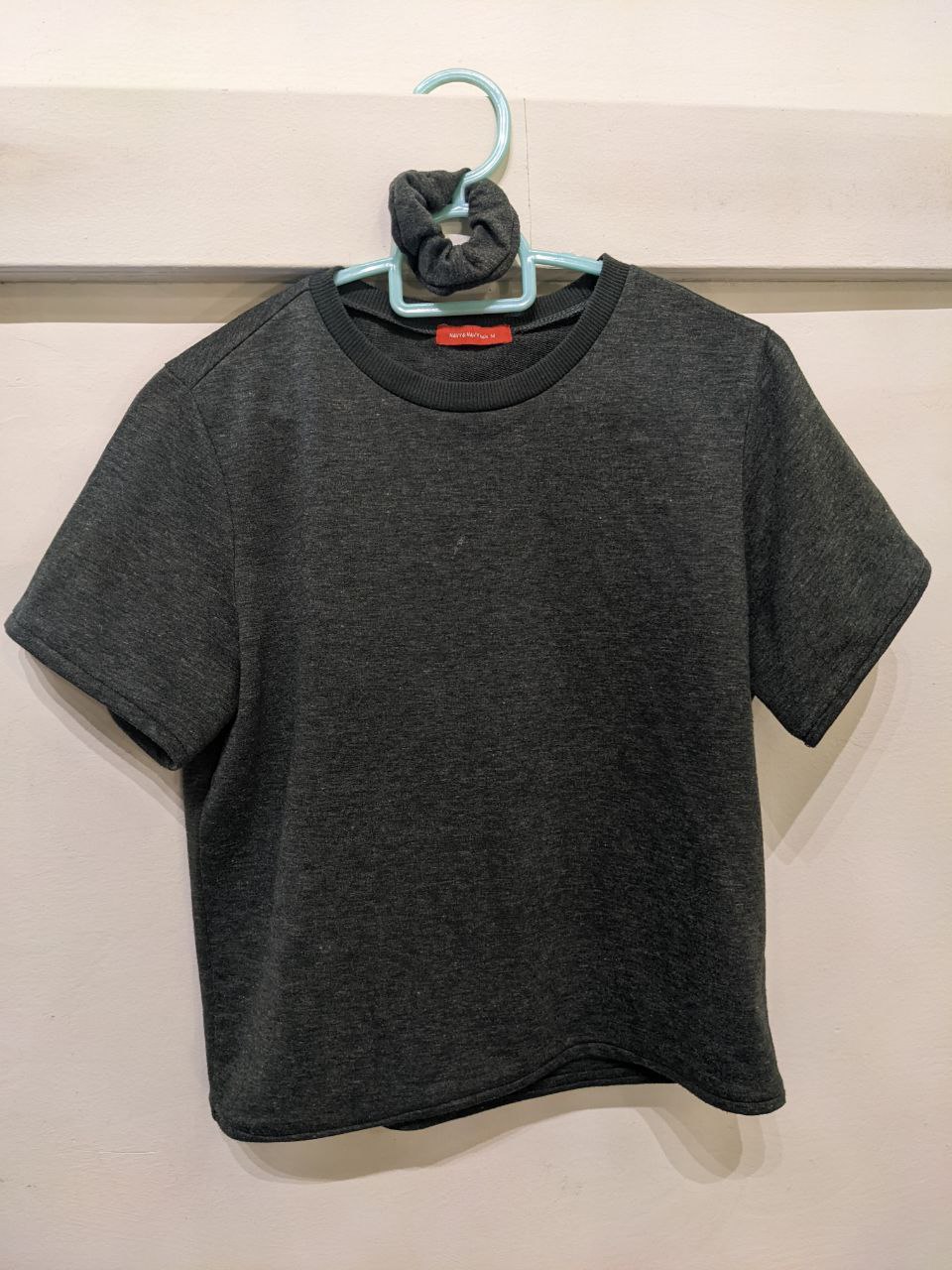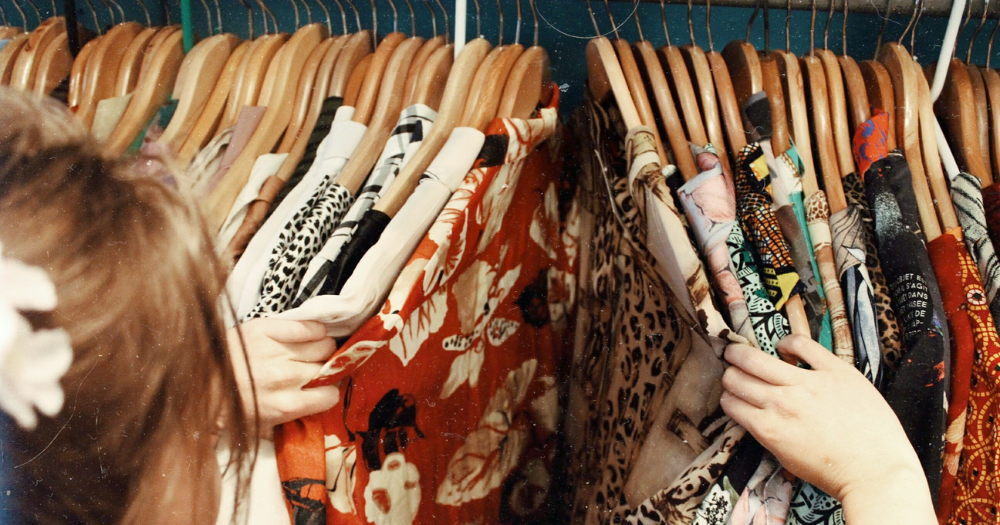Follow us on Telegram for the latest updates: https://t.me/mothershipsg
Ever since I got better at evading my parents' questions about buying new clothes more than five years ago, I haven't bought any brand new outfits just for the occasion.
"I have clothes to wear," I would simply tell them.
Granted, new clothes symbolise new beginnings for an auspicious new year. After all, the new year is all about leaving behind the old and welcoming the new. But when it comes to clothes, I argue that this mantra should not apply.
Instead, I wear what I already have because 1) no one would notice, and 2) even if they did, aren't clothes meant to be reworn?
The lure of fast fashion
I get it — there is a certain joy to having new things. But then again, if you already own enough clothes, is there really a need for new ones?
On average, Singaporeans buy 34 pieces of new clothing each year and discard 27 pieces, according to a survey by CNA.
This excessiveness is fuelled by the mass production of low-cost clothing, aka fast fashion.
Retailers benefit from churning out garment after garment using low-quality materials and relying on sweatshop labour because consumers love the price.
Thinking about buying a top with tiger prints just because it's the Year of Tiger? Think again. The ever-changing fashion trends then encourage consumers to overbuy and wear the same clothes less often at the same time.
Essentially, we buy more clothes than we need, yet don't feel particularly satisfied with them.
The impulse purchases I made for the past new years also fell apart quickly and I can hardly remember wearing them again.
We all know the pain of ending up with a piece of clothing you realise you're never going to wear again. It caught your eye while shopping, but its "new-ness" faded quickly and it got buried in the back of your wardrobe.
What's so bad about buying more clothes?
There are plenty of hidden costs behind these purchases that snowball into a much bigger problem than you'd expect.
As consumers at the end of the long supply chain, it is easy to underestimate the scale of resources poured into manufacturing these garments — after all, all we have to do is to click a few buttons or simply tap our card to make payment at the counter after selecting the clothes we want.
To help you appreciate the issue better, here's an example to illustrate how resource-intensive it is to make clothes:
According to the UNEP, making a pair of jeans requires 10,000 litres of water just to grow the 1kg of cotton needed.
For comparison, it would take a person 10 years to drink 10,000 litres of water.
The fashion industry is responsible for 10 per cent of annual global carbon emissions, consuming more energy than aviation and maritime shipping combined.
Based on current trends, it is also predicted that emissions from the fashion industry will rise by more than 50 per cent by 2030.
Rampant overconsumption has also created a huge issue for the disposal of textile waste and donated used clothes, which are more often than not dumped in landfills.
Remember the mountains of clothes at Salvation Army donation drop off points last month?
Sustainable sources of 'new' clothes
So, if you already have a wardrobe full of clothes, you can just wear what you already have. Or you can explore wearing the clothes you already have in a different way this Chinese New Year. It even stretches your dollar, so you can get your money's worth from your clothes.
By extending the lifespan of our clothing by nine months, it would reduce carbon emissions, water and waste footprint of each clothing by 20 to 30 per cent, according to one research study.
If you're looking to wear new clothes while still saving money and the environment, here's what you can try to scratch that itch:
Thrifting
Fast fashion has generated a growing industry for secondhand clothing, and thrifting for clothes can be a fun experience if you know where to look.
Thrift stores like SSVP Shop and pop up flea markets at *SCAPE and Lucky Plaza offer a wide range of clothing and accessories that has something for everyone.
I also enjoy thrifting more than retail shopping because it is a chance to explore new styles and snag one-of-a-kind pieces that I would treasure more, and you never know what you will find.
Swapping
Clothes swapping or renting is another option for a fresh new look, at a fraction of the cost of owning one.
They significantly prolong the lifespan of each piece of clothing, and you can be sure the clothes are well-maintained at the store.
Stores such as The Fashion Pulpit and Swapholic are popular choices for swapping, while rental shops like Style Theory and Rentadella can act as extensions to your wardrobe.
Turning old into new
Clothes that have undergone wear and tear can also be given a second lease of life, by repairing them at the tailor or seamstress.
Instead of retail therapy, how about some DIY therapy? Repurposing your existing wardrobe in new ways can not only be refreshing, but is also a sustainable practice.
I cropped a lightly-used long-sleeved shirt into a T-shirt that I wear more often and asked a friend who owns a sewing machine to help me with the hems.
Initiatives like Repair Kopitiam provide sewing machines and teach people how to fix their belongings themselves.
 I also hand-sewed matching scrunchies with the leftover fabric.
I also hand-sewed matching scrunchies with the leftover fabric.
As you clear out your wardrobe for spring cleaning, consider visiting thrift shops or swapping your clothes that are still in good condition.
Reach out to friends or family who would appreciate pre-loved clothes to hold a CNY clothes exchange, or simply give them away.
Alternatively, put them up on resale platforms like Carousell so they can find a new home.
These are also pocket-friendly ways to get new clothing.
In the new year, becoming a more conscious consumer could be your new beginning.
Related stories:
Top images by Becca McHaffie/Unsplash.
If you like what you read, follow us on Facebook, Instagram, Twitter and Telegram to get the latest updates.

